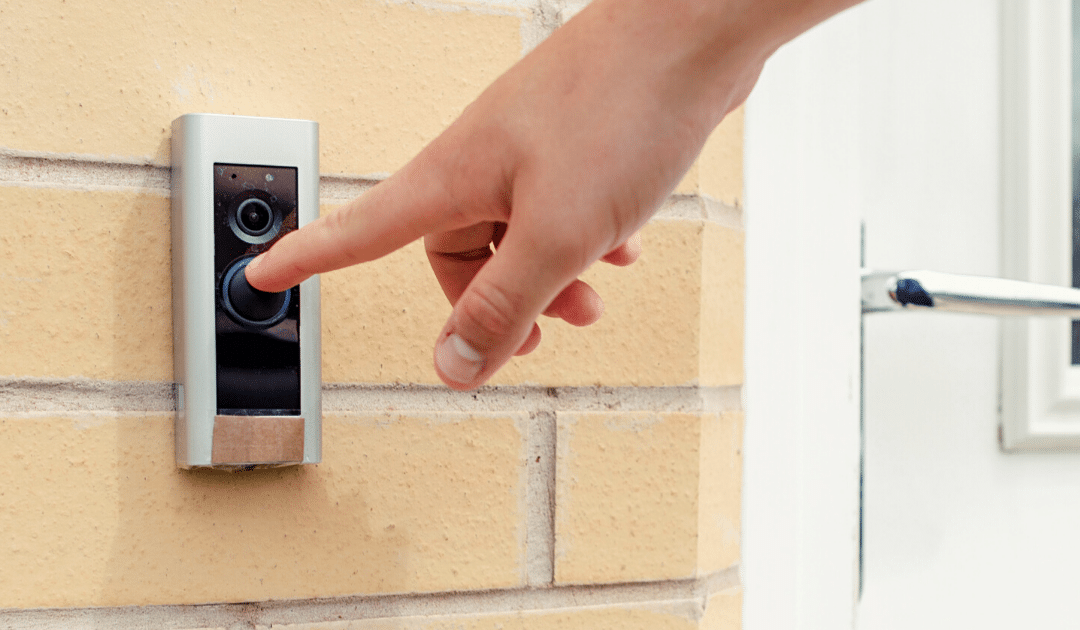by California Casualty | Firefighters |
The recent passing of Heather Schafer, National Volunteer Fire Council CEO, has left a huge wake of emotions for those individuals and organizations that she touched and worked with within the fire service. California Casualty would like to recognize Heather’s life contributions to the fire service along with sending our thoughts and prayers to her family and those affiliated with the NVFC during this very sad moment in time.
 Heather was committed to her leadership role and progression of training, education, benefits, and safety for all those who chose to serve as a volunteer firefighter or EMS provider in their communities. Her visionary leadership was seen by the NVFC board of 90+ members through building an organization that reflects and supports the needs of over 750,000 volunteer firefighters and EMS providers across the US. The NVFC Programs offered under Heather’s leadership illustrate caring, compassion, and support of those giving selflessly in the fire and emergency services.
Heather was committed to her leadership role and progression of training, education, benefits, and safety for all those who chose to serve as a volunteer firefighter or EMS provider in their communities. Her visionary leadership was seen by the NVFC board of 90+ members through building an organization that reflects and supports the needs of over 750,000 volunteer firefighters and EMS providers across the US. The NVFC Programs offered under Heather’s leadership illustrate caring, compassion, and support of those giving selflessly in the fire and emergency services.
In 2007, Heather submitted a grant for the National Junior Firefighter Program for the California Casualty Group Grant Contributions Committee to consider. Her grant proposal showed the need to inspire young people in our communities to get involved with the fire service and become future leaders. The Jr. Firefighter Program was a natural fit for the educational grants that California Casually provides across our group affinity partners. Her actions set the course for Heather to be asked to serve on the California Casualty Group Advisory Board in 2011.
Heather has served on the CCG Advisory Board for almost exactly 10 years and served the last 3 years as the Chair of the CARES Grant Contributions Committee. She’s been an influential figure in helping other organizations obtain desperately needed education grants. Jon Hamm, California Casualty Advisory Board member recently said:
“I have had the great pleasure of working with Heather on the Cal Casualty Advisory Board and the CARES Committee. Heather was made to serve on the CARES Committee because she is wired for kind acts. I have said that if our board had categories Heather would hands-down win the category of nicest board member. And to have that attitude made anyone who came in contact with her feel genuinely welcomed and cared for. The world could use more Heathers!”
California Casualty would like to express its gratitude and appreciation to Heather’s family and the NVFC for the 10 years of dedicated service to the California Casualty Group Advisory Board.
“Heather was a dear friend, mentor, and collaborator to so many people. It’s been my privilege to learn and watch her steadfast guidance of the NVFC. She was a true group partner bringing many new benefits and services to the families of firefighters and EMTs. She was the facilitator of bringing California Casualty’s Auto and Home program to life for NVFC members. Her life will be remembered by so many in so many different ways. A forever heartfelt thank you to Heather for sharing her life with us.”– Roxanne Dean, Vice President Account Relations
This article is furnished by California Casualty, providing auto and home insurance to educators, law enforcement officers, firefighters, and nurses. Get a quote at 1.866.704.8614 or www.calcas.com.

by California Casualty | Calcas Connection, Homeowners Insurance Info |
The real estate market is usually deemed “hot” when inventory is low and competition is high. Hot markets often mean quick turnover, crowded open houses, bidding wars, and sales that close above asking (and sometimes all in cash). To the surprise of many, we’ve been in a hot market nationwide throughout the pandemic, and there are few signs it’s cooling down.
If you’re planning to buy (or sell!) soon, you’ll want to position yourself well by doing some extra prep work and research than you would in a neutral market. That way, you’ll be able to make smart decisions fast and strike when you see the right opportunity. Follow these pointers to come out ahead.
For buyers and sellers
-
- Get a good agent – An experienced agent who knows your local market will be worth their weight in gold. If you’re a buyer, they should know about listings before they come on the market and know how to make your offer stand out. Ask for referrals from your network and social circles.
- Be patient – Especially for buyers, patience is a virtue in a hot market, when you can make many offers before your winning one is accepted. Try not to get discouraged – rather, stay focused on your goal! And if you’re a seller, patience will help you find the right buyer.
- Know what’s going on in your local market – Your agent will know what market trends and events mean for your goals and priorities, but it’s smart to follow the market movements yourself too.
- Don’t get emotional – Letting emotions influence the buying or selling process can lead to bad or regretful decisions. Practice mindfulness or other techniques to stay grounded in those stressful moments of the journey. It’s good to have some thresholds and decisions made ahead of time so you have some “guardrails” at the ready.
- Have your paperwork ready – Whatever papers and documents you’ll need for the process, get as many of them ready as possible beforehand. That way, you won’t lose precious time when the clock is ticking.
- Be ready to move quickly – Speed is the name of the game in hot markets. Things can change overnight, and the perfect opportunity might present itself out of nowhere. When the conditions meet your pre-determined criteria, move quickly.
- Keep your insurance until you close – Don’t make changes to your insurance or cancel it prematurely – no matter how sure a deal seems.
If you’re a buyer
-
- Be very clear on your budget. The absolute first step is to know how much home you can afford. Knowing your range is good too but be sure you know where your ceiling is – and stick to it once you start putting in offers.
- Know your must-haves and where you can be flexible. Have a clear understanding ahead of time what attributes your new home must have and what things can be changed, renovated, or aren’t all that important in the grand scheme of things.
- Window shop – Get a handle on the local market by touring homes that would be in your price range and meet your requirements. This way, you’ll gain a sixth sense and sharp instincts for when you start making offers.
- Get financing and a pre-approval letter. Make sure your financing is lined up and you have a pre-approval letter. You’ll want to go with a lender that delivers on their promises and has a track record of closing loans quickly.
- Leverage your agent. Your agent has ways to make you stand out from the rest of the bidders. For instance, they can find out what the seller wants by calling the listing agent or gleaning information from the multiple listings service (MLS), which has more information than public listings.
- Read our guide. If you haven’t already, check out our top tips for your home-buying journey (good for any market, including hot markets!)
If you’re a seller
-
- Prep your property. Sellers in a hot market will have more luck selling their home “as is,” but it can pay off to make any needed fixes before listing. This will help you attract more interest and multiple offers (which usually means a better sale price in the end).
- Consider staging. Staging is probably one of the best ways to position your property to sell quickly and at a good price. It puts your home in its best possible light and gives potential buyers a great first impression and good feeling in the space. It will also differentiate your property from others.
- Get the “pre-work” done. Go over what you might need with your agent ahead of time. They might suggest getting an inspection done before listing, lining up a title company, and other due diligence items.
- Manage your expectations. A hot market doesn’t guarantee that you’ll get multiple offers over asking. Each sale is the product of lots of different variables, which is why it’s worth taking extra steps to give your property every advantage.
With the right tools, knowledge, and strategies, you can do well in a hot market. Above all, remember to get a good agent, have patience and get the prep work done before hitting “GO.” Good luck!
This article is furnished by California Casualty, providing auto and home insurance to educators, law enforcement officers, firefighters, and nurses. Get a quote at 1.866.704.8614 or www.calcas.com.

by California Casualty | Homeowners Insurance Info |
You’ve got a few tools at your disposal for protecting your possessions. First, there’s homeowner’s insurance in the case of theft or loss, but you can also take steps to prevent theft in the first place, by getting a quality home security system.
There are lots of great options out there, and as technology continues to progress, the choices keep expanding. In fact, it can all be a bit overwhelming, so let’s dive into the top considerations you’ll want to look at when choosing a security system – including your first decision point: whether to go with a DIY or a professionally installed system.
DIY vs. Professionally Installed
DIY systems come as packaged kits that you need to install yourself. For most, you’ll be doing the security monitoring, usually via a smartphone app, but some require you to pay for professional monitoring. Professionally installed systems, on the other hand, are installed by a technician, and monitoring is done by the company (trained dispatchers verify triggered alarms and dispatch authorities when needed).
DIY Systems:
Pros
-
-
- Flexibility in tailoring a system to your needs
- Less expensive and usually no monthly fees
Cons
-
-
- Requires you to install the system correctly
- You’re responsible for monitoring (i.e. not missing a smartphone alert!)
Pro-Installed Systems:
Pros
-
-
- System is expertly installed by a trained technician
- 24/7 monitoring by professionals who can dispatch at a moment’s notice
Cons
-
-
- More expensive, with installation and monthly service fees (as well as potential false alarm fees, add-on components, and other fees)
- Usually require multi-year contracts
Popular Systems
Here are some of the most well-known and top-rated systems on the market. In your research, you may find others as well.
DIY Systems:
Pro-Installed Systems:
7 Additional Considerations
As you further hone your choices – be they DIY or pro – here are some other things to take into account.
1. Wireless vs. wired. Systems can be wired or wireless (or sometimes have elements of both). The basic difference is that your control panel and network of sensors are on either a cellular or a landline connection. What you choose will depend on what you need from the system. That said, always make sure to choose a system that includes two-factor authentication for extra security.
2. Pick a system that fits your lifestyle. For instance, is it mainly for when you’re out of town, or also while you’re at home? Do you want it to do smart-home integration, like turning lights off/on, controlling the thermostat, or have sensors for fire, water leak, and glass breaks?
3. Tailor it to your home. For instance, homes with large yards or outdoor areas typically need cameras; condos or apartments can get away with simpler systems.
4. Do your research. No matter if you’re installing your own system or going with a company, learn about all the components available – oftentimes, your system will be a tailored combo of what makes the most sense for keeping your home safe and secure. Systems can include any of the following: control panels, base stations, keypad, locks, contact sensors, motion sensors (interior and exterior), entry sensors, key fobs, glass break sensors, security cameras, door and window sensors, and a variety of different alarms and/or sirens. Most also have signs for your yard or windows to advertise that yours is a secure home.
5. Freedom vs. convenience. If going the DIY route, weigh whether you want the added security of having professional monitoring or if you want to do this yourself. If you’d rather not have that constant responsibility (or stress), that will limit your choices for DIY systems.
6. Conduct due diligence. If you’re leaning towards pro-installed, make sure you get three custom quotes and are clear about how the contracts differ and their terms. Also, take advantage of an in-home consultation if the companies offer it.
7. Check with your local police department. Some municipalities require that anyone running their own security system with professional monitoring obtain a permit. This ensures that their law enforcement and authorities are aware of alarm systems in their jurisdiction.
Choosing the right home security system is a highly personal choice that depends on your lifestyle, budget, home features, and the value of your belongings. Do your research and take your time – but also give yourself a high-five for taking action! Security systems can not only save you money from potential theft, but also prevent the trauma of dealing with a break-in (no one needs that stress right now!). Good luck and also remember to make sure your home insurance is up to date.
This article is furnished by California Casualty, providing auto and home insurance to educators, law enforcement officers, firefighters, and nurses. Get a quote at 1.866.704.8614 or www.calcas.com.

by California Casualty | Pets |
We’re coming up on a year of the pandemic, and one of the biggest side effects has been loneliness and isolation. For some, that’s especially trying during Valentine’s Day (on the heels of the winter holidays!). Stress, anxiety, and depression are among the top adverse mental health effects emerging from a year of lockdowns and quarantine.
For many pet owners though, their furry family members have been a solace – even a source of joy and grounding – during an unprecedented time of difficulty. This is no surprise to scientists, who have long studied how animals help combat loneliness and provide companionship. Here are some of the ways our four-legged (and other!) lifesavers have been helping us emotionally and boosting our mental health.

They give us a sense of purpose
Having a routine and caring for another being gives us a sense of meaning and purpose. Animals don’t know we’re in the middle of a pandemic, so there’s comfort in seeing them carry on life, as usual, content and happy in the moment.

They provide companionship
They’re our friends and companions – making us laugh, inviting us to be present, and loving us no matter what. And for so many of us, they’re suddenly our new workmates, bombing our zoom calls and taking over our keyboards. They offer their steady presence – at the bedside in the morning, in our laps as we’re trying to read, underfoot at dinner time. No matter what happens in our day, they’re there for us.

They keep us active
Well, at least in the case of dogs, who will keep us to a walking schedule (whether we like it or not!). Once out and moving, we can reconnect with nature, wave to neighbors, and fill our lungs with fresh air. They can help us break up the monotony of the day with some movement and downtime.

They’re our family
No matter how big or small, there a reason we call them our “babies.” We form deep, emotional attachments to our pets, a neurological bonding process that goes back to our pre-history of animal domestication. They have a seemingly endless supply of love to dole out and are there for us whatever mood we’re in. For children and teens, this can be especially important during the pandemic.

We’re wired for connection
Pet and animal therapy have been proven to help the elderly and those with cognitive conditions. We may not fully understand the science, but it’s well-known that just being around animals helps so many. It can lower stress, improve emotional self-regulation, decrease pain symptoms and boost positive hormones.
Given all the benefits pets bring us, it’s no wonder pet owners are feeling extra grateful these days and that pet adoptions have been skyrocketing. If you’re thinking of adopting, do your research, make sure you’re ready to commit long-term, and be a responsible adopter.
This article is furnished by California Casualty, providing auto and home insurance to educators, law enforcement officers, firefighters, and nurses. Get a quote at 1.866.704.8614 or www.calcas.com.

by California Casualty | Educators |
Congratulations on surviving another semester of pandemic schooling, which could be considered enough stress for an entire school-year itself. You’re now savoring the last of your winter break and some hard-earned R&R. But the mornings are dark; it’s cold and snowy (or wet) outside. Chances are, you’re not itching to get back to early morning zoom classes!
Motivation at the peak of winter takes a hit every year. Here are some tips to fire up your and your students’ motivation to get through these last winter months with renewed energy and focus.
For Teachers
1. Start and end the day with joy – Bookending your day with little pleasures – anything that brings a smile – can help your mindset for the whole day. This could be as simple as using a beautiful, high-quality planner, sipping your morning coffee from a favorite mug, or setting photos of family and friends in view. Or it could be taking a daily walk to connect with nature, keeping a gratitude journal, or any other little ritual that brings joy.
2. Know that you’ve got this – Take a moment and look back at how you met and rose to the challenge of 2020. Taking time to acknowledge your achievements and resiliency can help you find the motivation to forge ahead into 2021. Having confidence in yourself will help fortify you when overwhelm creeps up from time to time.
3. Practice self-care – We all know the drill about airplane masks: Take care of yourself first, or else you won’t be able to help others. List out the things that replenish and energize you, and then take steps to prioritize those in your week. Maybe it’s reading, hiking, or connecting with friends. Tending to your own health and well-being will have a spillover effect of being a better teacher.
4. Communicate with your administrators – Your administrators are there to support you, so ask for assistance when you need it. Use clear communications to let them know about challenges or workload issues – and remember that just like at every other school in the nation, pandemic-era education is a work in progress. Patience and open communications are some of the best tools for thriving amid the challenges.
5. Remember why you’re doing this – At the end of the day, it’s about the kids. When overwhelm and stress threaten to overtake you, try to reconnect with the reason you became a teacher in the first place. Acknowledge it’s not easy and everyone’s doing the best they can. Compassion – for yourself and your students – goes a long way.
6. Pace yourself – Sometimes, having the finish line in sight helps with the final push. Put up a calendar and mark the days until spring break. You’re only a couple of months away – you can do it!
Helping Your Students
7. Share your experience – By acknowledging with your students that everyone’s been having a hard time, it gives them permission to feel their feelings. By sharing any struggles you yourself have had, they’re likely to feel less alone, ashamed, or self-critical.
8. Be optimistic – Optimism is contagious. The more positivity and optimism you bring to the classroom, the greater the chance it’ll rub off on your students. It may well help buoy them and ignite their natural resilience. Remind them that there’s a light at the end of the tunnel – spring break is around the corner!
9. Encourage kids to designate a cheerleader or two – If kids surround themselves with people who encourage and support them, they’ll get through this year with a lighter mental load. Encourage them to find a few people in their life whom they can check in with on their successes and struggles. Support and community are more important than ever right now.
10. Make this crazy time a learning experience – No matter their age, kids will take away life lessons from this pandemic year. By framing this year as a challenge that you all tackled and surmounted together, they’ll gain lessons on resilience, community, and collaboration that will serve them for years to come.
11. Celebrate successes – Celebrating students’ successes – whether those are individual or collective – will be extra meaningful this year. Recognizing their hard work and achievements will help them feel seen and acknowledged. Successes can be academic, behavioral, or something you see in their personal growth.
12. Make it fun – Find simple ways to give your students a lift as they return from winter break. This might mean sending welcome-back messages or scheduling something fun for them to look forward to, such as a competition or creative group project. Infusing passion and creativity into their lessons and subject matter will go a long way towards engagement.
Finding motivation (this year especially) to get through the rest of winter might take every ounce of energy you’ve got – but in the end, you may just end up being surprised by your own strength and resilience.
This article is furnished by California Casualty, providing auto and home insurance to educators, law enforcement officers, firefighters, and nurses. Get a quote at 1.866.704.8614 or www.calcas.com.
 Heather was committed to her leadership role and progression of training, education, benefits, and safety for all those who chose to serve as a volunteer firefighter or EMS provider in their communities. Her visionary leadership was seen by the NVFC board of 90+ members through building an organization that reflects and supports the needs of over 750,000 volunteer firefighters and EMS providers across the US. The NVFC Programs offered under Heather’s leadership illustrate caring, compassion, and support of those giving selflessly in the fire and emergency services.
Heather was committed to her leadership role and progression of training, education, benefits, and safety for all those who chose to serve as a volunteer firefighter or EMS provider in their communities. Her visionary leadership was seen by the NVFC board of 90+ members through building an organization that reflects and supports the needs of over 750,000 volunteer firefighters and EMS providers across the US. The NVFC Programs offered under Heather’s leadership illustrate caring, compassion, and support of those giving selflessly in the fire and emergency services.








